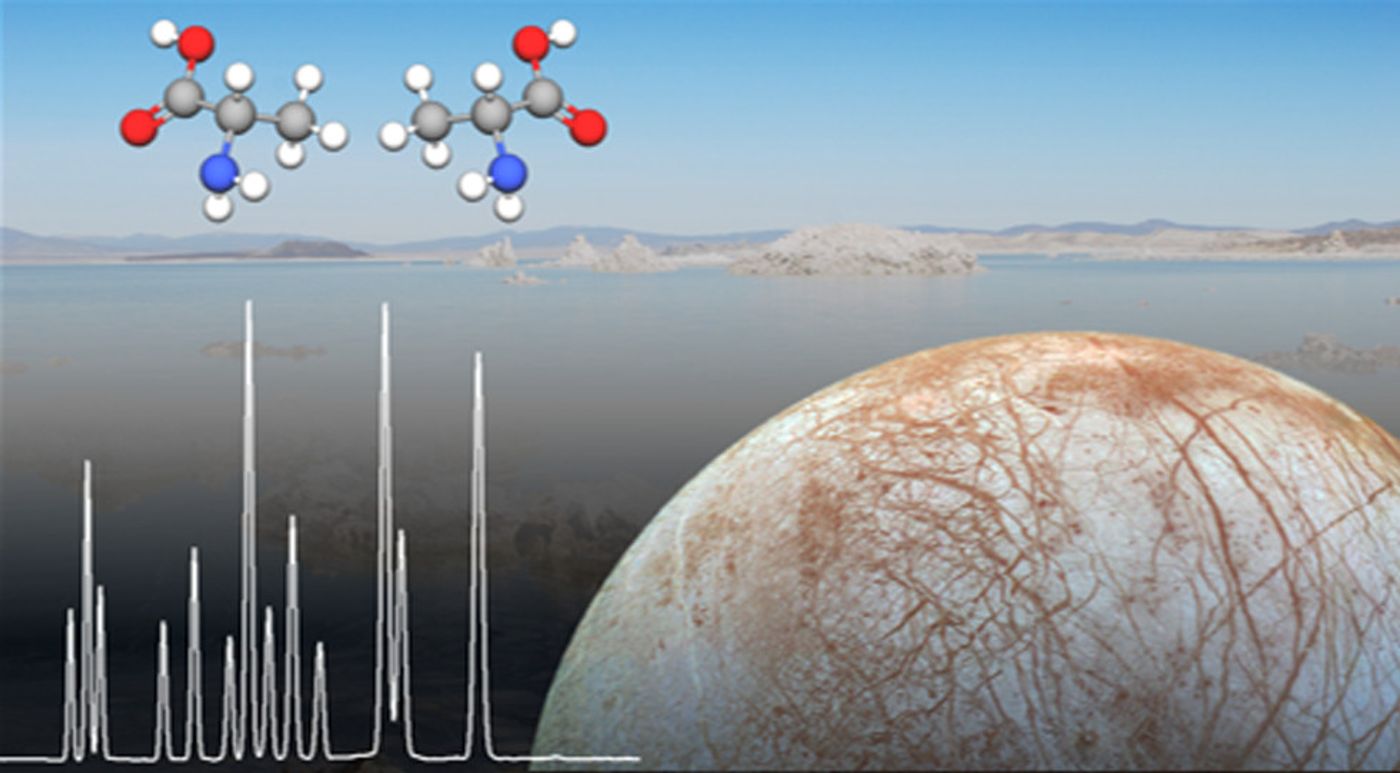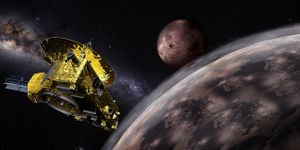A New Chemistry Test for Alien Life
As life has originated and evolved, the necessary components have always been the proper building blocks and water. Building blocks such as amino acids are needed for both abiotic and biotic reactions. While there are hundreds of different varieties of amino acid configurations in abiotic reactions, biotic reactions have narrowed this down to only 20.
Scientists believe that potential life on other planets might have a similar evolutionary strategy. In addition to the types and configurations of amino acids, scientists can also look at chirality. Chiral molecules are developed into two forms consisting of mirror images of each other. Amino acids form “left-handed” and “right-handed” versions of the same molecule. Prior work examining the differences between abiotic and biotic forms of amino acids has determined that while abiotic, or non-living, sources have an equal amount of both left- and right-handed forms, biotic organisms contain primarily the left-handed form.
Using this knowledge, researchers from the NASA Jet Propulsion Laboratory have devised a new technique to analyze samples for amino acid type and chirality to look for signs of life on other planets. The chemistry-based test is a simple yet more sensitive version of capillary electrophoresis.
Previous analytical techniques used to analyze samples from other planets have mainly been gas chromatography and mass spectrometry. The issue with these techniques for organic molecules is that there is an additional preparational step involved in getting the sample into the gas phase. This additional sample prep and unwanted reactivity makes amino acid detection challenging and much less sensitive.
Lead author Jessica Creamer, a postdoctoral scholar at JPL explains, “Our method improves on previous attempts by increasing the number of amino acids that can be detected in a single run. Additionally, it allows us to detect these amino acids at very low concentrations, even in highly salty samples, with a very simple 'mix and analyze' process."
Capillary electrophoresis allows the samples to be analyzed immediately with no additional preparation as it is performed on samples in the liquid phase. The researchers coupled capillary electrophoresis with laser-induced fluorescence detection to achieve the high sensitivity needed for smaller samples and samples with low levels of potentially organic molecules.
The process is easily automated using liquid samples collected from other planet’s oceans, like that on Jupiter’s moon Europa. By combining a liquid sample with a liquid reagent, then shining a laser across the mixture using laser-induced fluorescence detection, researchers can observe specific molecules moving at different speeds. Through chemical analysis, the molecules become separated based on how quickly they respond to electric fields and can then be further analyzed.
“Using our method, we are able to tell the difference between amino acids that come from non-living sources like meteorites versus amino acids that come from living organisms," said the project's principal investigator, Peter Willis of JPL. "One of NASA's highest-level objectives is the search for life in the universe. Our best chance of finding life is by using powerful liquid-based analyses like this one on ocean worlds."
Sources: Analytical Chemistry, NASA









